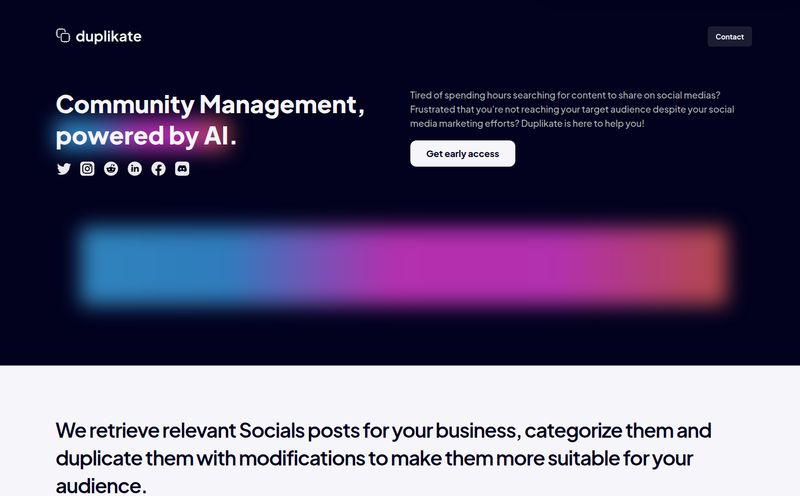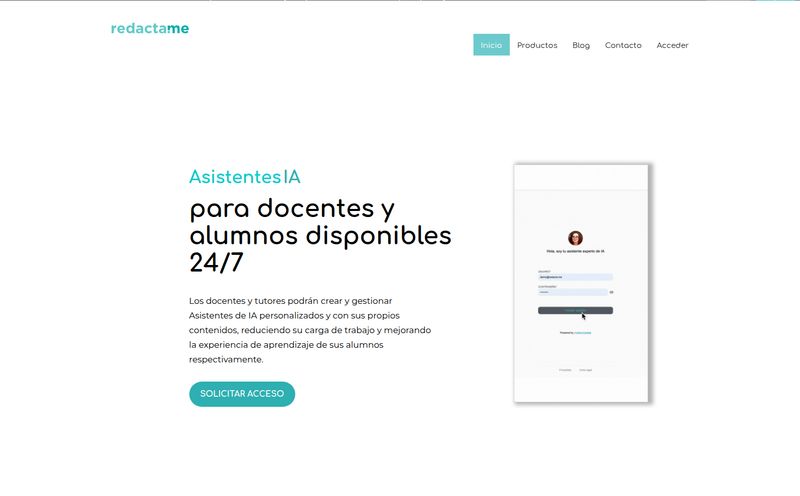If you're running an eCommerce store, your daily life probably feels like you're trying to juggle a dozen angry cats. You have your email marketing platform over here, your SMS provider over there, a chatbot for the website, and you’re manually replying to DMs on Instagram and Facebook. Each one has its own login, its own analytics, its own… headache. It's a disconnected mess, and you just know you're leaving money on the table.
Every so often, a tool comes along that promises to be the holy grail. The one platform to rule them all. Today, we're talking about one of those contenders: BIK. It bills itself as an all-in-one marketing automation platform built specifically to boost ROI for eCommerce brands. Big promises. But as someone who's seen countless 'game-changing' platforms come and go, I've learned to approach these things with a healthy dose of skepticism. So, I dug in to see if BIK is the real deal or just another shiny object.
So, What Exactly Is BIK Supposed to Do?
At its core, BIK aims to be the central nervous system for your store's customer communication. Instead of having five different tabs open to talk to your customers, it pulls everything into one place. We're talking Instagram DMs, Facebook Messenger, WhatsApp, Email, and SMS. That alone is pretty compelling.
But it's not just a unified inbox. It's an automation platform. The goal is to create automated, personalized conversations across all these channels to acquire new customers, keep the ones you have engaged, convert those on-the-fence shoppers, and bring back the ones who have lapsed. It’s about building a customer journey that feels personal, not robotic, and doing it at scale. A tall order, for sure.

Visit BIK
Breaking Down The Core Features
Alright, let's get into the nuts and bolts. A platform is only as good as its features, right? Here’s what stood out to me.
The Multi-Channel CRM Dream
This is the big one. For years, we marketers have been trying to stitch together a true 360-degree view of the customer. BIK gets pretty close by integrating the channels where customers actually hang out. Think about it. A customer might see your ad on Instagram, ask a question in the DMs, and then get an abandoned cart reminder on WhatsApp. Normally, those are three separate, disjointed conversations. Here, they're all part of one continuous thread. It’s like moving from scattered post-it notes to a single, beautifully organized digital journal for every customer.
Personalized and Gamified Nudges
I was genuinely curious about this one. The term "gamified" gets thrown around a lot. In BIK’s world, it means creating interactive experiences like quizzes, spin-the-wheel pop-ups, and personalized offers that don't feel like a boring, static coupon code. It's about adding a little fun back into marketing. In a world where everyone is getting bombarded with “10% OFF!” emails, a little bit of creative engagement can make a huge difference. It's a smart play, because memorable interactions build brand loyalty, not just one-off sales.
Smarter Campaigns and Segmentation
As a data-driven marketer, this is my jam. BIK allows for some pretty intelligent segmentation. You can target customers based on their browsing history, past purchases, cart value, and a ton of other behaviors. This means you can send a very specific offer to high-value customers who haven't purchased in 60 days, versus a welcome series for a brand new subscriber. This isn’t just good marketing; it's respectful marketing. You're not blasting everyone with the same irrelevant message. From a paid ads perspective, this kind of segmentation is gold for creating powerful retargeting audiences.
The Holy Grail of Abandoned Cart Recovery
Ah, the abandoned cart. The bane of every eCommerce manager's existence. According to some studies, like those from the Baymard Institute, the average cart abandonment rate is hovering around 70%. That's a staggering amount of lost revenue. BIK's approach is to tackle this across multiple channels. If an email doesn't work, a gentle, non-spammy WhatsApp message might. Or maybe a Facebook message. By meeting the customer where they are, you drastically increase the chances of recovering that sale. This feature alone could potentially pay for the platform itself.
The Good, The Bad, and The...Vague
No tool is perfect. Let's get down to the brass tacks. I love the concept, but there are a few things that give me pause.
On the plus side, having a truly all-in-one system is a massive win. The time and money saved by not having to subscribe to and manage 4-5 different tools is significant. The focus on channels like WhatsApp and Instagram DMs is also incredibly forward-thinking. This is where modern commerce is happening, and many legacy platforms are still playing catch-up. The flow builder for creating automations is reportedly easy to use, which is a big plus for smaller teams without a dedicated developer.
However, and this is a big however, the pricing is a complete black box. You won’t find a pricing page on their site. It’s all “Book a Demo” and “Talk to Sales.” I have to be honest, this is a huge pet peeve of mine. As a business owner, I want to know if a tool is even in my budget's ballpark before I invest an hour in a sales call. This lack of transparency can be frustrating and feels a bit old-school. It makes you wonder if the price changes depending on how big they think your company is.
Another point is the potential for additional costs with “OnDemand Integrations.” While it's great that it integrates with other platforms, you need to be clear during that sales demo about which integrations are included and which will cost you extra. Lastly, any powerful platform has a learning curve. They say it's easy, but to really master all the features and get the maximum ROI, you should expect to invest some time in learning the system. It's not a magic wand you can just switch on.
Who Is This BIK Platform Really For?
So, who should book that demo? In my opinion, BIK isn't for the person just starting out with a handful of sales a month. It's for established D2C brands and eCommerce stores that have a decent amount of traffic and are looking to optimize their conversions and lifetime value. If you have an active social media presence, especially on Instagram, and you feel like you're drowning in customer interactions and missed opportunities, then BIK is squarely aimed at you. It’s for the brand that's ready to graduate from a patchwork of tools to a serious, integrated marketing machine.
That Little Green Tick of Trust
One feature I want to call out specifically is the Green Tick Verification for WhatsApp. If you've ever gotten a message from a business on WhatsApp, you know the difference. That little green checkmark next to the brand name instantly builds trust. It tells the customer, "This is the official, verified account." It's a small detail that has a massive psychological impact and can significantly boost open and engagement rates. The fact that BIK helps facilitate this process is a serious value-add, as getting it on your own can be a bureaucratic nightmare.
Frequently Asked Questions about BIK
What is BIK primarily used for?
BIK is an all-in-one marketing automation platform for eCommerce brands. It's used to manage and automate customer communications across channels like WhatsApp, Instagram, Facebook Messenger, SMS, and email to increase conversions and ROI.
What channels does BIK support?
It supports the big five for modern D2C: Instagram, Facebook, WhatsApp, Email, and SMS, all managed from a single platform.
Is BIK a good choice for a small business?
It's likely better for an established small or medium-sized business rather than a brand-new one. If you have consistent traffic and sales and feel like you're outgrowing your current tools, BIK is worth investigating.
How much does BIK cost?
This is the million-dollar question! Unfortunately, BIK does not publish its pricing publicly. You need to book a demo and speak with their sales team to get a quote tailored to your business needs.
Can BIK really help with abandoned carts?
Yes, this is one of its key strengths. It uses a multi-channel approach to send automated, personalized reminders to customers who have left items in their cart, significantly improving the chances of recovering the sale.
Does BIK integrate with Shopify?
While not explicitly stated in all materials, a platform like this is almost certainly designed to integrate with major eCommerce platforms like Shopify, WooCommerce, etc. This would be a crucial question to ask during a product demo.
Final Thoughts on BIK
So, what's the final verdict? I'm cautiously optimistic. The concept behind BIK is absolutely on the money. The future of commerce is conversational, and it's happening across multiple channels. A platform that unifies and automates this is exactly what growing brands need. The features, especially the multi-channel cart recovery and smart segmentation, are powerful money-makers.
The biggest hurdle is the opaque pricing strategy. It's a barrier that I wish they'd tear down. But if you're a serious eCommerce player feeling the pain of a disconnected marketing stack, you owe it to yourself to at least book the demo. Go in with a clear idea of your budget and a list of tough questions. BIK could very well be the central command center you've been looking for to scale your brand to the next level.
Reference and Sources
- BIK Official Website: https://bik.ai/ (Note: This is the assumed official domain)
- Baymard Institute - Cart Abandonment Rate Statistics: https://baymard.com/lists/cart-abandonment-rate
- HubSpot Blog - The Ultimate Guide to WhatsApp Marketing: https://blog.hubspot.com/marketing/whatsapp-marketing



